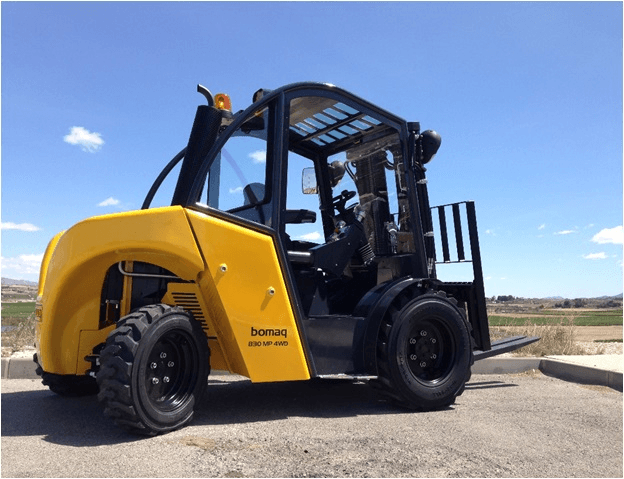Ross Grassick
Bomaq
Lencrow presents “Building the Bomaq” with Antonio Martinez (Spain) – Part II

Antonio takes us through the engineering and design phase of the Bomaq in Part II – “Building a product for the market as requested by the market”.
Stay tuned next week because we will be letting you all know what significance the name BOMAQ has to Antonio what it means. A question we are sure you are all wondering!
Perkins Engine
The components are high quality – how do you work with the suppliers to maximise performance and ensure quality?
“There are 5 keys in the heart of a Bomaq:
1-The engine is Perkins because of the reliability and simplicity
2-The transmission is Linde – the toughest and the best quality available from my point of view. I’ve had 0 problems after 8 years using them when at Mast
3-The hoses are Parker and Manulli – 2 of the best available on the market
4-The valves and gear pumps are Parker products and easily the best available
5-The mast is Liftek-elecar who supply to Toyota Industries
I have a great rapport with suppliers and a great coordination with their engineers to match and select the parts to fit Bomaq forklifts suitably. All the parts have been rated by the supplier engineers to ensure that they will work with Bomaq products.”
The aesthetics has people talking – is there any significance in the design that serves purpose to the final product?
The Bomaq MP Series Forklift
“Of course! The design is not the first stage of a product:
First you have to define what you want the product to do and determine the purpose for performance. To address this I took data from the main competitors and from the common industrial forklift, like Linde or Toyota. Then I made a list of characteristics that the product would need; like size, turning radius, height, weight power, ground clearance, etc. Then with the initial data I allocated the main components to achieve the performance: axles, engine, pumps, cylinders, cabin size, etc. Then with all the main components it’s time for the CAD system to work and integrate all of the factors ensuring the characteristics defined in first stage are met. At this point, several times you have to go back to step 1, then 2 and 3 again.
Once design is finished and everything seems to match the parameters you have to simulate and calculate over and over again until you are 200% sure everything is perfect. Once the prototype is complete the previous steps have been done properly and a few things should be changed for serial production; most of them come from the assembly. And this is how the Bomaq was designed – the final design was motivated by ensuring the forklift could complete all the necessary functions.”
The Bomaq endures some tough conditions. Can you tell us about the tests you have conducted with the forklifts? (Extreme snow & heat)
“The knowledge from Mast has had a strongly influenced Bomaq and the ten years of testing on the team with Mecano Continental has given us a lot of knowledge to work with. Here we have done: traction tests (for checking the diff locks in 4WD), noise measurements, vibration measurements, transmission approval by Linde, temperature and cooling tests (think here we reach 45 degrees Celsius in summer). I think that if the product is assembled properly the main thing is to control the quality of the parts used so that no problems can occur later.
For example; 1 thing that I’m sure the competitor’s don’t do: we wash every hose used in the machines regardless of how clean the supplier says they are; why? If one hose has any particles inside it can damage the pumps very easily and the cost would be huge. We have a machine that flushes water with a cleaning product and we wash all the hoses before assembling them.”
With the introduction of Tier 4 regulations in manufacturing you will have had to include electronic components in the design. Will this change the way Bomaq performs?
“So far we have not used a TIER 4 engine because it’s not suited to our market and there have been no requests for it. It depends on the power of the engine and in our range we have not reached it yet. Of course it will mean the use of electronics but only in the engine and the throttle pedal, nothing else. The electronics will be well tested and be as reliable as the engine.”
Bomaq Industries
What do you see for the future of Bomaq? Support and service for brands is a popular topic for internationally known brands and your experience would testify to this. What advice would you have for your prospective customers in regards to this?
“Future is always hard to predict. I think we will be pushing the 3 and 5 ton models creating all the documentation the customers need for service (parts and maintenance books). It will also mean that our parts website will be remain to up to date www.parts4spare.com so our customers can buy parts online. I will continue to update and modify our products with the feedback from customers so we never lose our essence of manufacturing products designed by the market, for the market. I’m also beginning to work on the 2 ton electric model (parts allocation stage).”
